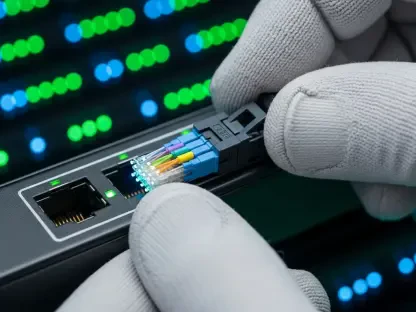I’m thrilled to sit down with Vladislav Zaimov, a seasoned telecommunications specialist with deep expertise in enterprise solutions and risk management for vulnerable networks. With years of experience in navigating complex communication challenges, Vladislav offers a unique perspective on how technology can transform the education sector. Today, we’ll dive into the innovative world of unified communications, exploring how tailored platforms can address the specific needs of schools and universities, enhance safety, and streamline operations in an often fragmented technological landscape.
How did the idea come about to develop a specialized communication platform for the education sector?
The inspiration really stemmed from recognizing the unique challenges schools and universities face. Many educational institutions deal with a patchwork of outdated systems—think old phone lines, separate paging setups, and disjointed emergency alerts. We saw a real need for something that could bring all these pieces together into a single, user-friendly solution. Feedback from educators and IT staff was crucial; they often mentioned how frustrating it was to juggle multiple tools just to communicate effectively across a campus. That drove us to create a platform that prioritizes simplicity and integration.
What are the key ways this platform simplifies communication for schools and universities?
It’s all about consolidation. Our platform pulls together everything from phone calls and messaging to public announcements and virtual classroom tools into one cloud-based system. Having a single dashboard means administrators and IT teams aren’t hopping between different apps or interfaces to get things done. It saves time, reduces errors, and lets staff focus on what matters—supporting students and educators—rather than wrestling with technology.
Can you describe the common problems with outdated communication systems in education and how your solution tackles them?
Older systems in schools are often a mess of separate networks cobbled together over years, sometimes decades. You’ve got internal phones from one vendor, emergency alerts from another, and none of them talk to each other. This creates headaches for IT teams and can even pose safety risks if critical messages don’t get through. Our platform integrates with existing analog setups, so schools don’t have to rip everything out and start over. It’s a bridge to modernization, making upgrades feasible even for institutions with tight budgets.
What sets your platform apart from other communication tools already out there in the market?
While there are great tools focused on collaboration, like video conferencing or chat apps, we aim to unify a broader spectrum of communication needs. We’re not just about meetings; we’re tying together telephony, messaging, and critical safety alerts into one cohesive system. This holistic approach—especially integrating emergency notifications right alongside everyday tools—really differentiates us. It’s about reducing complexity for schools, not adding another standalone app to their list.
Could you elaborate on the safety features built into the platform and why they’re so vital?
Safety is a top concern for schools today, and our platform addresses that head-on. We’ve integrated E911 services for precise emergency location tracking and partnered with alert systems to enable real-time campus-wide notifications. Combining these with everyday communication tools means there’s no delay or confusion during a crisis—everything is in one place. Separate systems can be a liability; unifying them ensures faster response times and less maintenance burden for IT staff.
How do you ensure schools can adopt this technology without facing major disruptions?
We know schools often have limited IT resources, so we’ve prioritized a smooth transition. Our platform is designed to work with what’s already in place, minimizing the need for a complete overhaul. We also offer tailored support and training to help staff—even those who aren’t tech-savvy—get comfortable with the system. It’s about meeting schools where they are and guiding them through the process without overwhelming their teams.
What are some of the biggest challenges you anticipate in convincing schools to switch to a centralized communication system?
Cost and compatibility are always concerns. Many schools operate on strict budgets and worry about upfront expenses or whether a new system will play nice with their current setup. Then there’s the decision-making process—district-level approvals and funding cycles can slow things down. We’re tackling this by emphasizing long-term savings, offering flexible integration options, and working closely with administrators to navigate those bureaucratic hurdles. It’s about building trust and showing real value.
What has the feedback been like from schools that have already started using this platform?
The response has been incredibly encouraging. We’ve heard from early adopters that the administrative tools are a game-changer—staff can easily set up and adjust call handling or messaging without needing an IT degree. One school district shared how having everything in one place cut down their response time during a safety drill significantly. Stories like that reinforce why we built this platform; it’s making a tangible difference in how schools operate and keep everyone safe.
Looking ahead, what is your forecast for the future of communication technology in the education sector?
I think we’re going to see a continued push toward unified, cloud-based solutions as schools recognize the inefficiencies of fragmented systems. Safety will remain a driving force—expect tighter integration of emergency tools with daily operations. There’s also a growing demand for scalability, so platforms will need to adapt to everything from small rural schools to sprawling university campuses. Ultimately, the focus will be on simplicity and resilience, ensuring that technology empowers educators rather than complicates their work.









